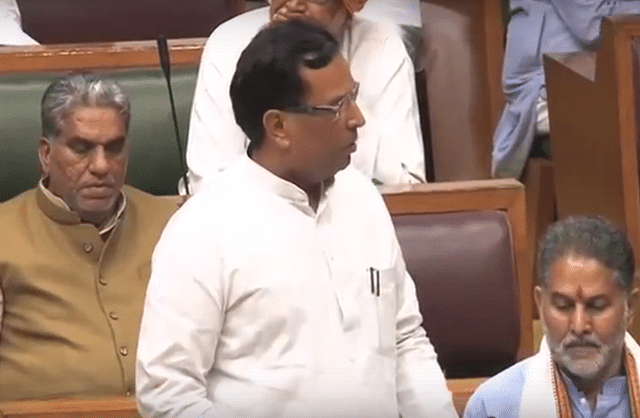
Haryana Budget Comes Up With Many Firsts
Haryana’s state budget of 2016-17 manages to strike a balance between fiscal prudence and a growth-oriented vision
Haryana Finance Minister, Abhimanyu Sindhu’s challenges were deciding on the appropriate trade-offs among giving impetus to good quality high growth; signaling to stakeholders on Haryana’s determination for fiscal prudence; addressing dysfunctional situation of power distribution companies; coping with the aftermath of recent disturbances in the State and creation of productive livelihoods.
The Budget exhibits competence and sound judgment of the Finance Minister and his team in balancing the goals and the resources.
The GSDP (Gross State Domestic Product) growth in 2015-16 is at 11.5 percent and real GSDP growth at 8.2 percent, higher than the national average. Similar growth rate of 11.6 percent is estimated for 2016-17, projecting State’s nominal GSDP to be Rs 5,877 billion.
The Budget has projected that the revenue deficit will decline from 1.34 percent of GSDP in 2015-16 to 1.1 percent in 2016-17. If UDAY outlays are taken into account, the corresponding proportions are 2.11 percent and 2.09 percent respectively.
The overall debt to GSDP ratio in 2016-17 is estimated to be 24 percent (with UDAY), and 19.6 percent (without UDAY).
Haryana’s own-tax revenue to GSDP ratio was 6.9 percent in 2015-16, and is projected at a similar level for 2016-17. This is a positive development as it reverses the trend observed since 2011-12. The State’s Own Tax Receipts to Revenue expenditure ratio in 2016-17 is projected at 58 percent. This needs to be further improved.
The above fiscal indicators do suggest that fiscal consolidation objective has been addressed, but there is little room for complacency.
The emphasis of the Budget on achieving outcomes rather than merely focusing on financial inputs represented by expenditure is welcome. More concrete outcome indicators in infrastructure, social, agriculture, and enterprise sectors would have further strengthened the economy.
The gap between Budget allocations, actual spending and quality of spending would also need to be better addressed.
The Budget proposes several initiatives that lay solid foundations for improving State’s economic and fiscal management and help enhance Haryana’s growth prospects and competitiveness.
First, the Budget exhibits willingness to address the difficult issue of reforming the finances of power distribution companies, whose poor management have severally constrained the State’s economy and fiscal numbers.
The Budget indicates that Haryana will actively participate in the UDAY (Ujwal DISCOM Assurance Yojana) scheme of the Union Government for healthier finances. The State accordingly will assume 75 percent of the accumulated debt of the Distribution Power Utilities. This is one of the indicators of the intention to improve economic and fiscal management in the medium term. But it does pose short-term fiscal challenges, and enhances urgency to sustain high growth.
Second, the Budget has attempted to incorporate and coordinate investment plans of key State undertakings outside the Budget (HUDA, HSIDC, HSAMB, HWC, and power utilities) with the Budget. This could assist policy coherence and organizational coordination. These in turn help to crowd-in private investments.
The next step is to formally unify these and similar agencies in the Budget.
Third, replacing Bank accounts of the departments with Personal Ledger Account (PLAs) is intended to improve transparency and accountability of State funds.
Fourth, setting up of a debt and case management cell (CDMC) in the Finance Department. Better management of treasury operations could also be an additional revenue source for the State. As States have been given increasing autonomy in managing their borrowing and debt, expertise in better debt management will be increasingly essential for Haryana.
Fifth, perhaps the first in the country, the proposal to set up a State level, academic institution to be named Swarna Jayanti “Fiscal Policy Institute” (FPI). The FPI could enable the State government to manage the fiscal risks more effectively and could help in capacity building among the State officials and legislators to undertake increasingly complex tasks in managing public finances. States perceived to be managing the finances more competently are likely to have a competitive edge as Cooperative Federalism arrangements become more entrenched.
Sixth, the initiative to undertake asset mapping of the State Public assets, including land and real estate, will have far reaching positive implications for public financial management in the State. It will facilitate revenue generating from the balance sheet of the State by permitting State assets to be used more productively. This enlarges the State’s resource envelope and permits flexibility in structuring partnerships.
Seventh, the setting up of a permanent Public-Private-Partnership (PPP) cell in the Finance Department will facilitate project planning and effective implementation, and help obtain resources for the State from context-specific tailored partnerships.
Operationalizing the above initiatives will require competencies and domain expertise in several areas. The Finance Minister’s speech does appear to recognize this. Organization of appropriate teams of State officials and outside resource persons, with accountability for outcomes, therefore merits serious consideration.
Rationalization of social sector subsidy programmes; and management of urban and local bodies, including progressing towards establishing Development Authorities for Gurgaon and their areas represent some areas which the Budget could have accorded greater focus.
According to the 2011 Census of India, 35 percent of Haryana’s population is classified as urban. If para-urban population is included, more than two-fifths of Haryana’s population is urbanized. Urban issues merit much higher priority in the State’s priorities.
In conclusion, while a Budget is the most important event, it should nevertheless be a part of a process of economic, political, and social management. Therefore the initiatives in other areas, such as those that help translate MOUs signed during Happening Haryana Summit on March 7 and 8, 2016; and measures to improve Haryana’s ranking in Doing Business among the Indian States, need to be integrated with the Budget’s initiatives. This will help achieve policy coherence and organizational coordination among the stakeholders.